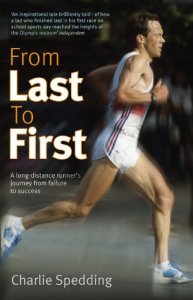
I have been reading a lot about the golden era of British distance running recently. The late 70s and early 80s were a time when some of Britain’s all-time greatest runners were at their peak. Seb Coe won gold at the 1980 and 1984 Olympics, Steve Cram set three world records in nineteen days in 1985 and Steve Jones set the British marathon record in Chicago in the same year. A look at the greatest British male marathon performances of all time shows what a rich period this was for marathon running in particular:
2:07:13 1985 Steve Jones
2:08:21 2014 Mo Farah
2:08:33 1985 Charlie Spedding
2:08:36 1997 Richard Nerukar
2:08:42 1996 Paul Evans
2:09:08 1983 Geoff Smith
2:09:12 1974 Ian Thompson
2:09:16 1985 Allister Hutton
2:09:17 2002 Mark Steinle
2:09:24 1982 Hugh Jones
2:09:28 1970 Ron Hill
2:09:28 1981 John Graham
2:09:31 2005 Jon Brown
2:09:43 1983 Mike Gratton
2:09:54 1989 Tony Milosorov
Seven of the fifteen sub-2.10 marathons were run in an amazing four-year period between 1981 and 1985 and three of the top ten came in one year: 1985. In the middle of this boom was the man third on that list and the 1984 Olympic marathon bronze medallist, Charlie Spedding.
I chose to read his book in the hope of finding out exactly how the runners of his era were setting such great times and to consider why today’s best are largely unable to match their achievements (Mo Farah aside, no British male has run under 2.10 in the last 10 years). I wanted to hear about his brutal workouts, legendary training groups, 150-mile weeks and weekends in the pub. I wanted to hear the story of a working class boy who, through sheer guts and determination, dragged himself- as the title suggests- “from last to first.”
Well, this was not what I got.
Firstly, the “last to first” title is quite misleading. Spedding was a very good runner from a young age, winning the national school’s 1500m aged seventeen. He did suffer with some difficult injuries throughout his career, as do many runners, but he seems to have had an almost supernatural ability to recover from them and reach a competitive standard quite quickly. He was winning races and running at a national and international level throughout his career. In other words, he had talent.
The book also provides relatively few insights into the running culture of the 1980s. Although Spedding was training with runners like Brendan Foster and Mike McLeod at Gateshead Harriers, he gives little sense of being part of a great generation. Indeed, he moved to Boston in 1980 and explains how being removed from the fiercely competitive environment of the UK helped him grow in confidence. Rather than being inspired by the great things happening around him at that time, he was stifled by them and felt the need to withdraw.
So for running readers looking for an insight into the success of the 1980s, Spedding’s book does not really deliver, but it does offer something no less inspirational.
Embed from Getty Images Embed from Getty Images
The real “last to first” journey happens inside Spedding’s mind and his strength as a writer is in the vivid way he describes his inner conflicts. He seems to have always been an under-confident runner, even from a young age, and was forced to overcome his low self-esteem by coaching himself to think differently. He describes losing races in slow times because he wasn’t mentally prepared to run them and also describes dragging an extra 2% out of himself when it really mattered. He acted as his own sports psychologist, many years before the job existed.
In the most effective chapter, he describes sitting in a Newcastle pub waiting for a train, a few months after missing out on the 1980 Olympic team. With the help of some writerly conceits (he happens to have just bought a new dictionary in which he can look up definitions of some key words), he begins to define success for himself. He realises that, rather than comparing himself to other people or arbitrary standards, his success should be “how much I fulfil the talent I was born with”- a way of easing the pressure and making success seem possible- an idea that many runners, me included, would do well to take on board.
This precision when writing about his state of mind also means that Spedding’s race descriptions are very compelling, especially his opening-chapter account of the 1984 Olympic marathon, when he outran Alberto Salazar, Rob de Castella and Toshihiko Seko on a hot day in Los Angeles. His mental toughness and self-belief gave him the edge that day and took him to the bronze medal.
The final few chapters offer some insight into his training regimes and even a session-by-session account of his build up to Los Angeles, but I will come back to the book more for Spedding’s refreshing way of thinking about training and racing. His story, better than any other running book I have read, illustrates that every athlete has untold reserves of strength if only they are willing to have the right attitude. It is a question being open to changing your beliefs. As Spedding says, “[People think that] sport is all about seeing what you can get out of it, but they are wrong, because sport is all about seeing what it gets out of you.”